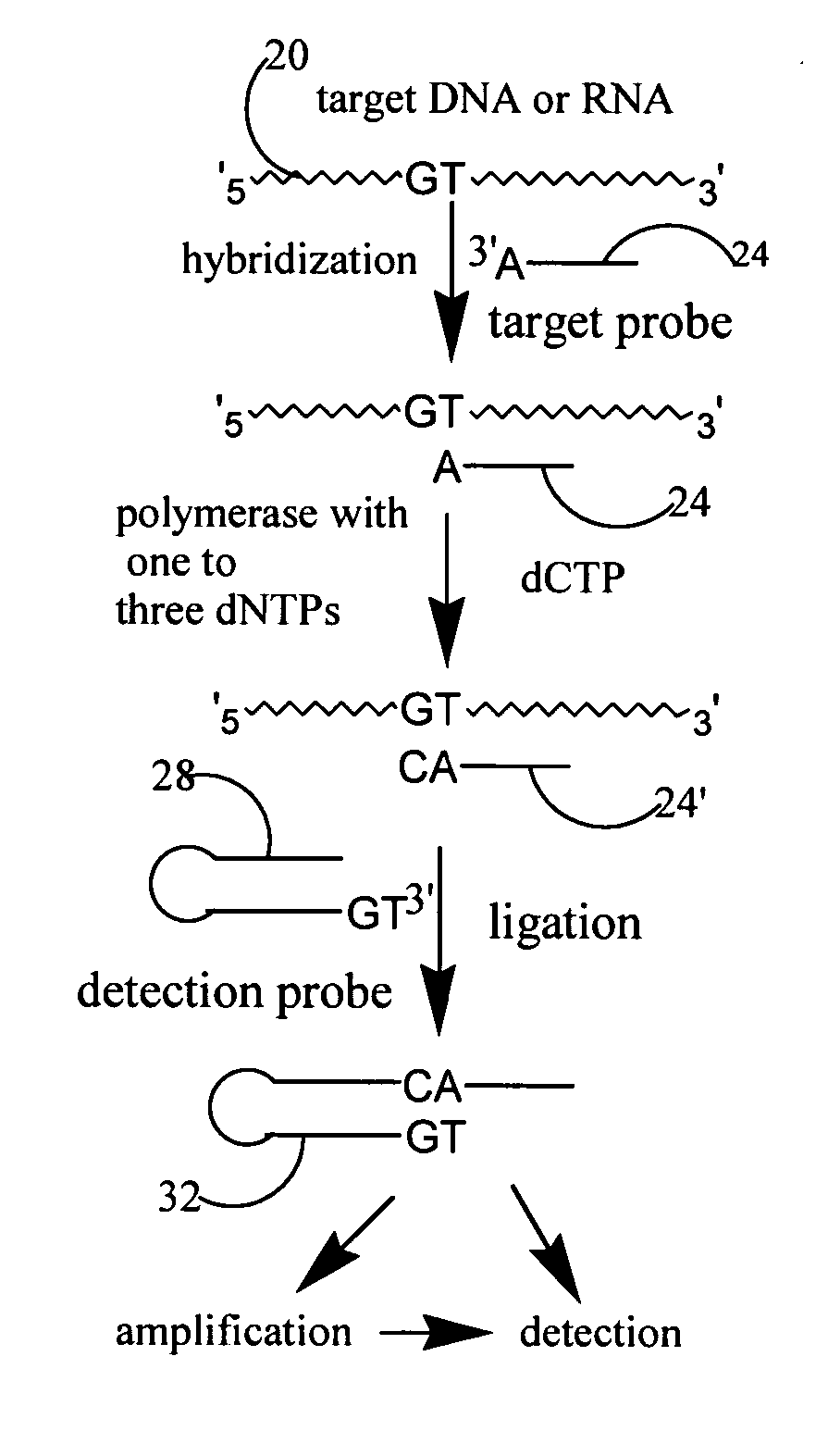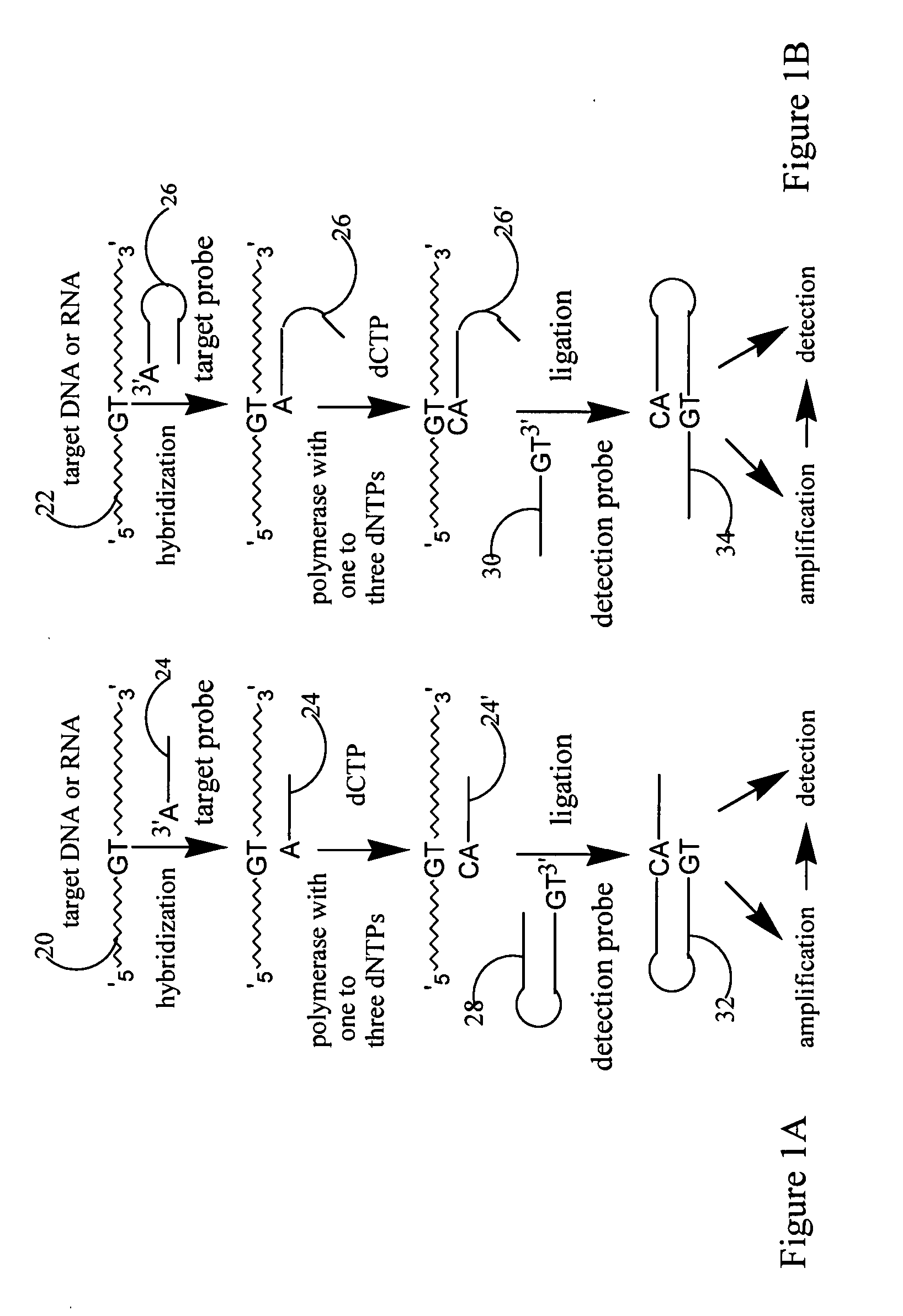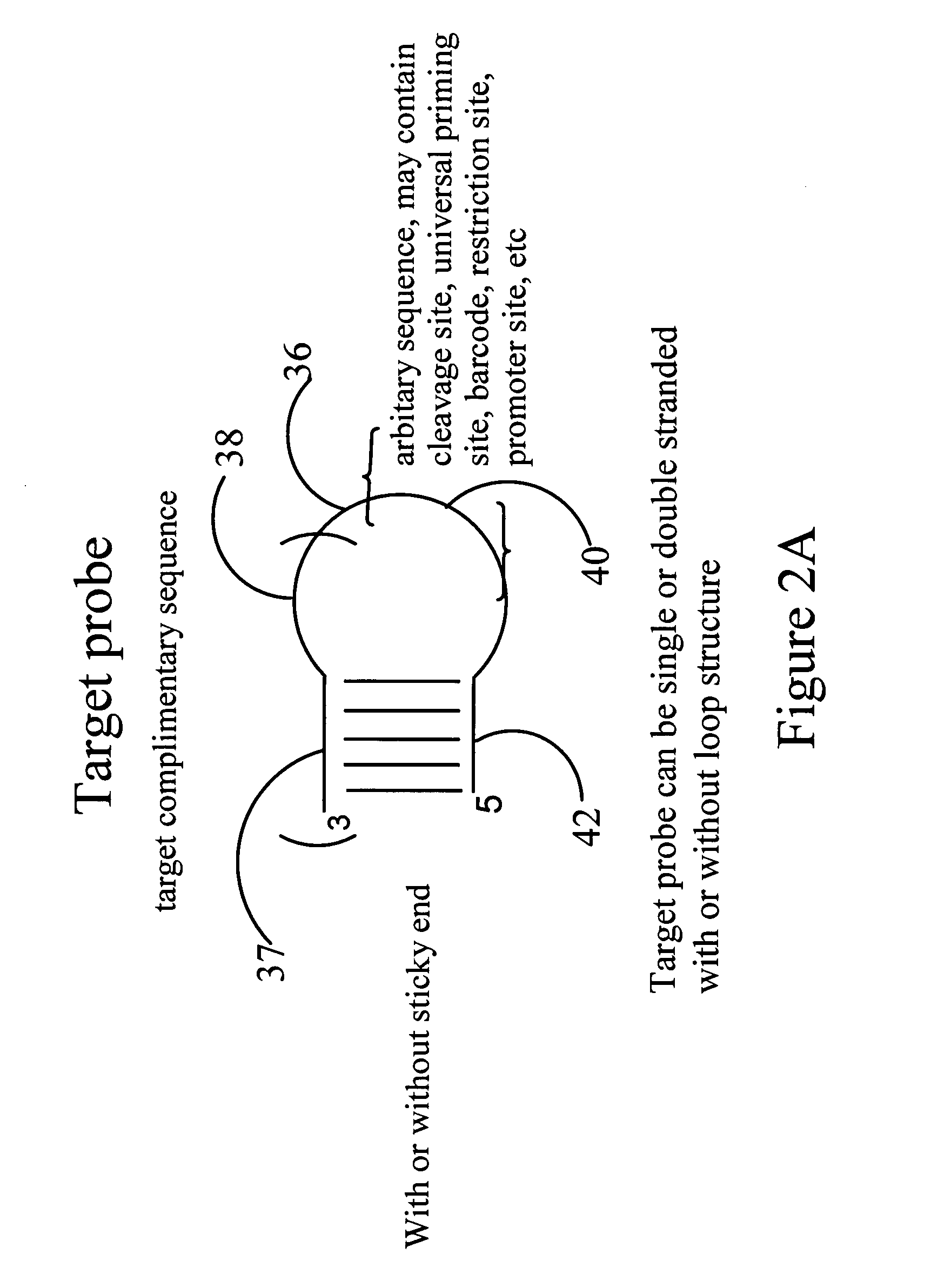Method and kit for nucleic acid sequence detection
a nucleic acid and kit technology, applied in the direction of microbiological testing/measurement, biochemistry apparatus and processes, etc., can solve the problems of limited success in parallel performing these techniques within the same sample, limited application of technology outside of research laboratories, and limited number of targets
- Summary
- Abstract
- Description
- Claims
- Application Information
AI Technical Summary
Benefits of technology
Problems solved by technology
Method used
Image
Examples
example 1
Target Probe Extension Based on Allele Specific Hybridization
[0174] This example demonstrates that a target probe with self-complementary sequence (hairpin structure), under hybridization condition, form a hybridization complex with target sequence. If the 3′ ended base of the target probe is complementary to the allele specific nucleotide on target sequence, under polymerization condition, one or several nucleotides will be added to the 3′ end of the target probe based on the type or number of nucleotides added. Such extension would lead to 3′ end sequence of the target probe complementary with 3′ end sequence of detection probe to make ligation between two probes possible. Hairpin probes named as Oct-25-2005-R was designed and ordered from Integrated DNA Technology for testing the extension reaction. Two synthetic target sequences were designed to test allele specific extension. One of the target sequences named as RS1389629-G is fully complementary to the target probe. The other...
example 2
Target Probe Adjacent to SNP Site is Extended by Single Nucleotide for SNP Detection
[0200] This example described that target probe adjacent to SNP site is extended by single nucleotide for SNP detection. Target probe hybridizes to target sequences located adjacent to SNP site. Target probe with only correct base added at its 3′ end is able to ligate with detection probe to form a ligated circular product. The SNP is identified according to the type of nucleotide added. Reaction between extended target probe and detection probe is sticky end ligation. 3′ end of the target hairpin probe annealing to target sequence extends one nucleotide from the 3′ end of the hairpin sequence, if only correct single nucleotide triphosphate and DNA polymerase present in the reaction. With further cycles of denaturing, annealing and extension, the number of based-extended target probes will increase in the reaction mixture. Under the presence of DNA ligase, detection hairpin probe, which have a two-n...
example 3
Sensitivity Test by Increasing the Amount of Extended Target Probe Based on Thermal Cycling the Probe Extension Reaction
[0211] Probe Annealing and Extension with Cycling the Reaction 1, 10, 15, 25, 35, 50 Times Respectively:
[0212] The reactions were set up in 200 μl PCR tubes in a 15 μl reaction volume containing 2.5 units AmpliTag DNA Polymerase Stoffel Fragment (Application Biotechnology), 10 mM Tris-HCl (pH 8.3), 10 mM KCl, 4 mM MgCl2, 0.15 mM dGTP. Reactions contained 5 μM extension probes and 1.5 μM target DNA. The cycling program consisted of initial denaturation at 95° C. for 3 min, followed by 50 cycles at 95° C. for 30 s, annealing and extension at 58° C. for 1 min. And a final extension at 72° C. for 5 min.
[0213] The amount of extended products produced with increasing number of cycles is estimated based on ligation reaction product with detection probe after exonuclease treatment. Results from FIG. 11 (lane 4 to lane 9) clearly demonstrated that increasing cycling prob...
PUM
| Property | Measurement | Unit |
|---|---|---|
| temperature | aaaaa | aaaaa |
| temperature | aaaaa | aaaaa |
| volumes | aaaaa | aaaaa |
Abstract
Description
Claims
Application Information
 Login to View More
Login to View More - R&D
- Intellectual Property
- Life Sciences
- Materials
- Tech Scout
- Unparalleled Data Quality
- Higher Quality Content
- 60% Fewer Hallucinations
Browse by: Latest US Patents, China's latest patents, Technical Efficacy Thesaurus, Application Domain, Technology Topic, Popular Technical Reports.
© 2025 PatSnap. All rights reserved.Legal|Privacy policy|Modern Slavery Act Transparency Statement|Sitemap|About US| Contact US: help@patsnap.com



